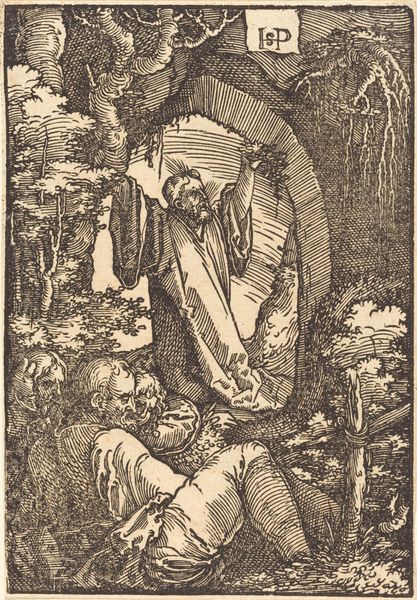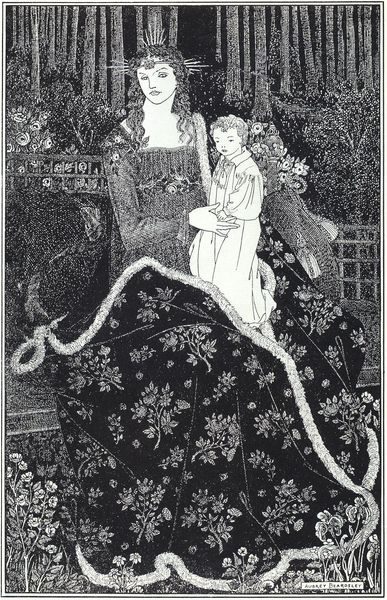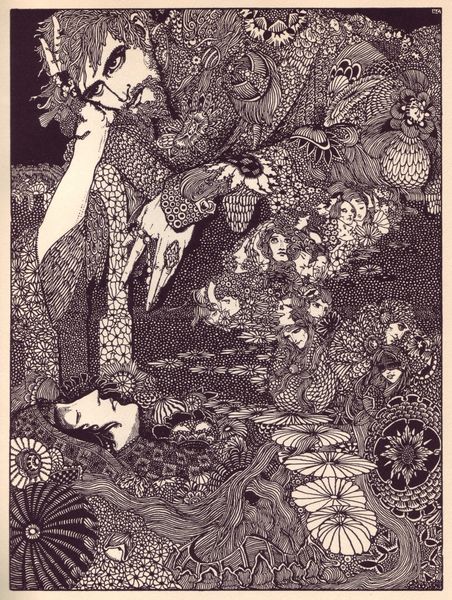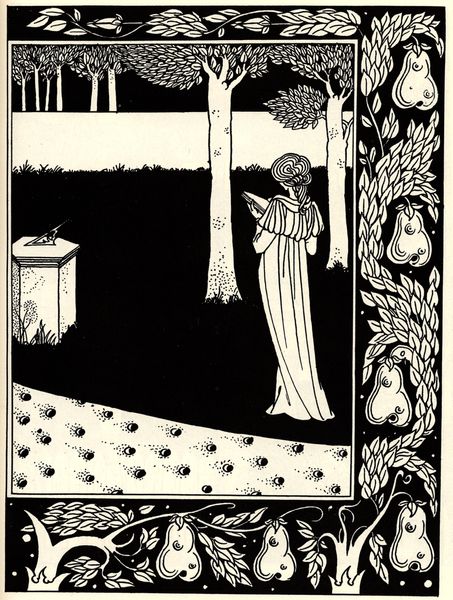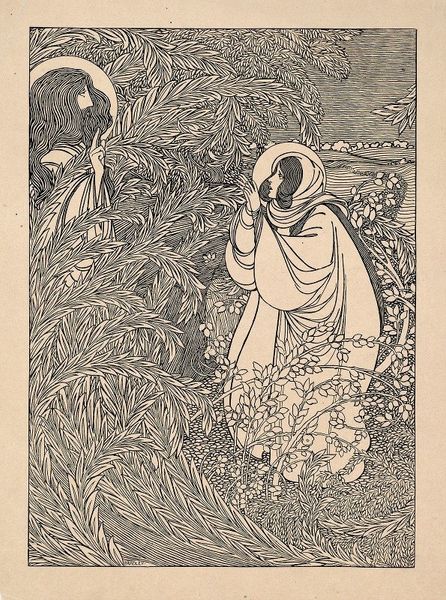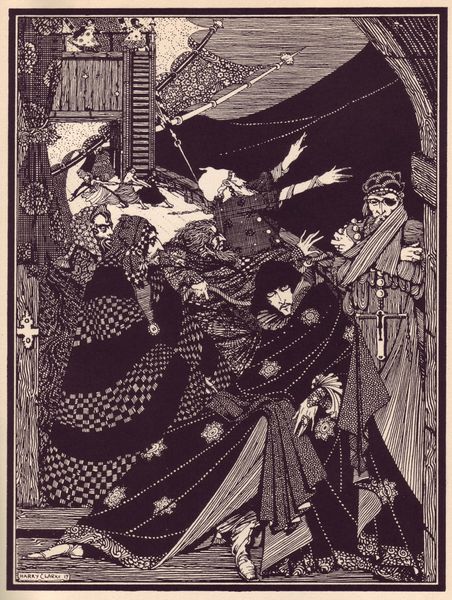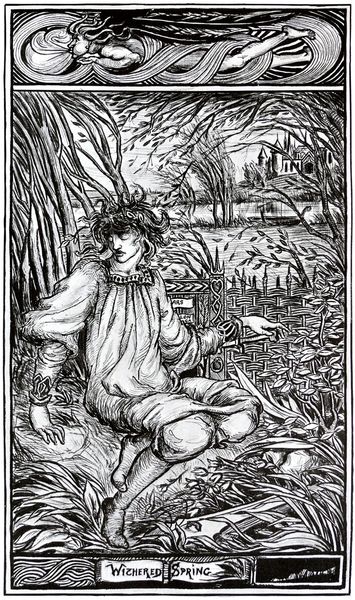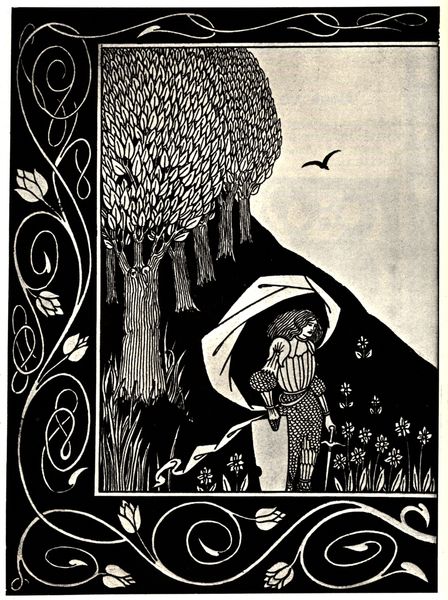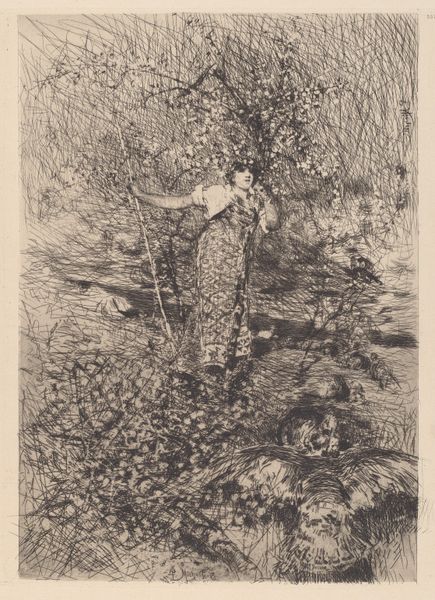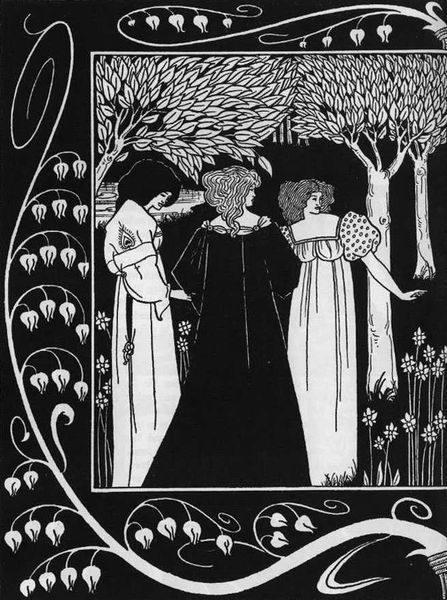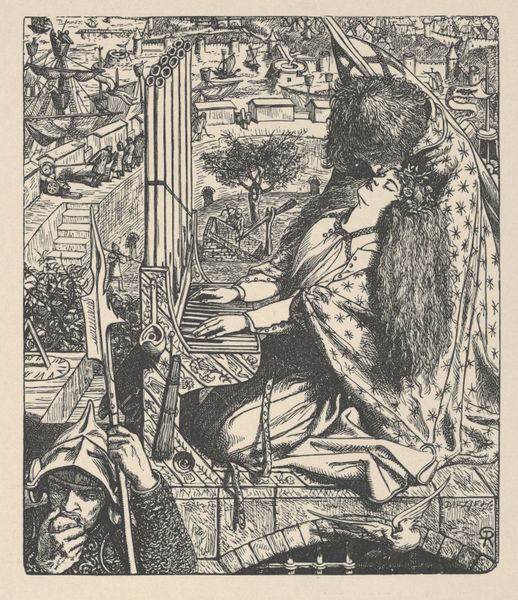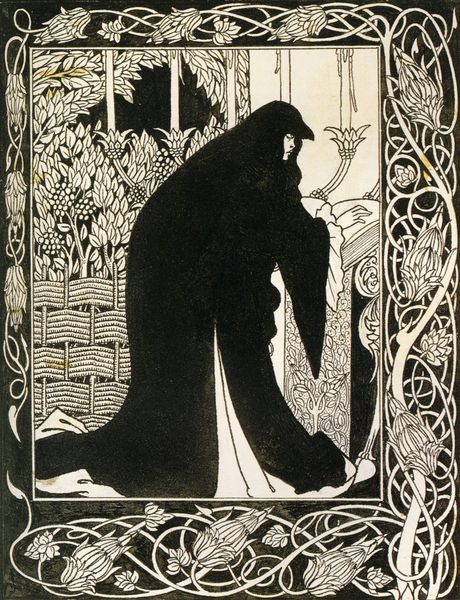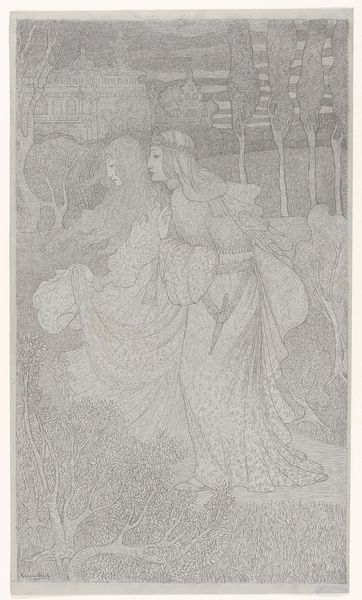
drawing, ink
#
portrait
#
drawing
#
art-nouveau
#
pen drawing
#
figuration
#
ink
#
symbolism
Copyright: Public domain
Curator: This piece is "The Abbe Fanfreluche," a pen and ink drawing crafted in 1895 by Aubrey Beardsley. Currently, it resides at the Victoria and Albert Museum in London. Editor: It’s captivating, with such a strong sense of decadent whimsy. There’s a visual intensity in the detailed rendering against the relative simplicity of the central figure, as well as the contrasts in light and shadow. Curator: Absolutely. The Art Nouveau influence is unmistakable, and it fits well into the broader Aestheticism movement of that era, with the fin-de-siecle artistic styles and anxieties coming through clearly in the subject’s face and attire. This kind of aesthetic flamboyance became tied with new class mobility in this period. Editor: Look at how the natural world here – the flowers and foliage – presses in on the figure. It’s almost claustrophobic. Could this imagery relate to the social constraints experienced by folks who don’t adhere to traditional sexual or gender norms? Curator: It is possible. The decadent movement cultivated deliberately paradoxical imagery – ideas and forms which reflected heightened sensations but which at the same time symbolized the futility of pursuing pleasure divorced from spiritual, moral or communal needs. And indeed Beardsley, as an artist, occupied a precarious position socially due to the notoriety of Oscar Wilde. The flower was a potent symbol during this period, linked to beauty, decay and also to queer identity. This figure and setting combine to form an image of precarious opulence. Editor: So there’s almost a sense of something lurking, right? The almost oppressive detail in the natural world suggests to me not a sense of belonging or harmony, but something darker. The flowers might be concealing something? Or a place to indulge? Curator: Perhaps both! The figure itself almost feels caught, held back or swallowed up. It evokes questions about the societal role of figures who challenge norms – are they liberated, or entombed by public opinion and expectations? Editor: Thinking about this in today’s terms then, maybe the picture offers a caution and encouragement. Celebrate self expression and also build something that lasts, outside of temporary forms of display. Curator: Indeed. The image encourages viewers to consider their place within art history. How it speaks of queer lives then, and to consider now too. A message of precarious liberation.
Comments
No comments
Be the first to comment and join the conversation on the ultimate creative platform.
